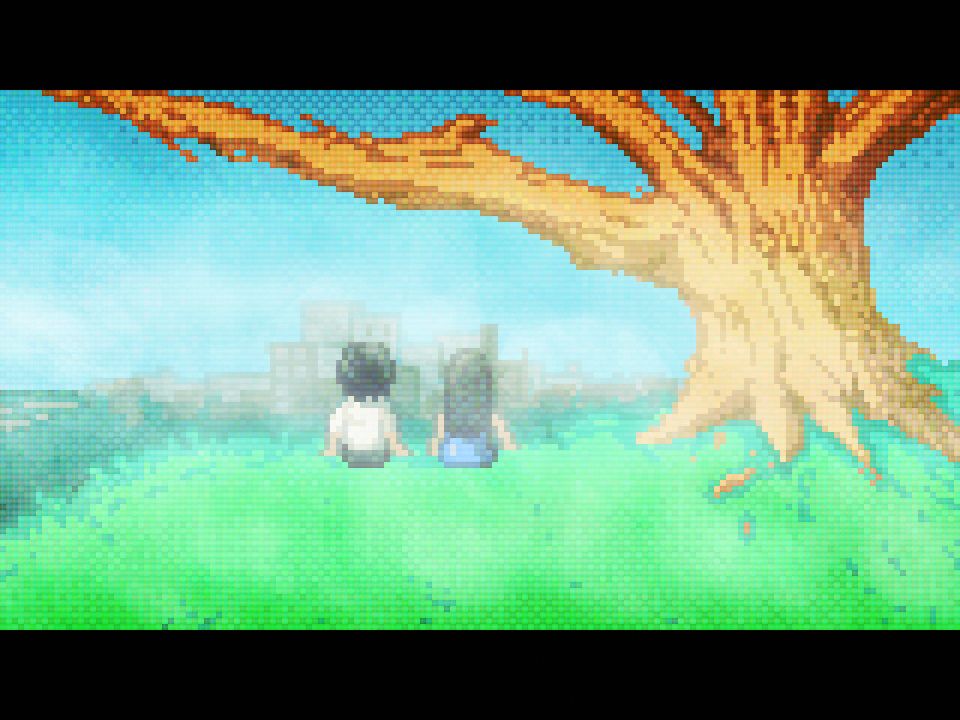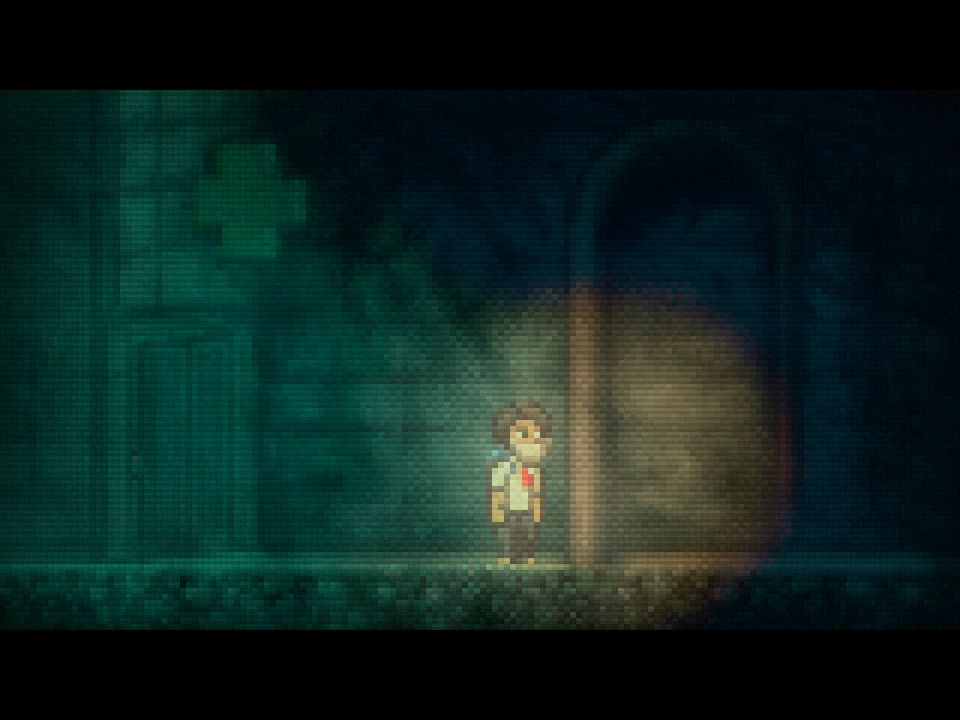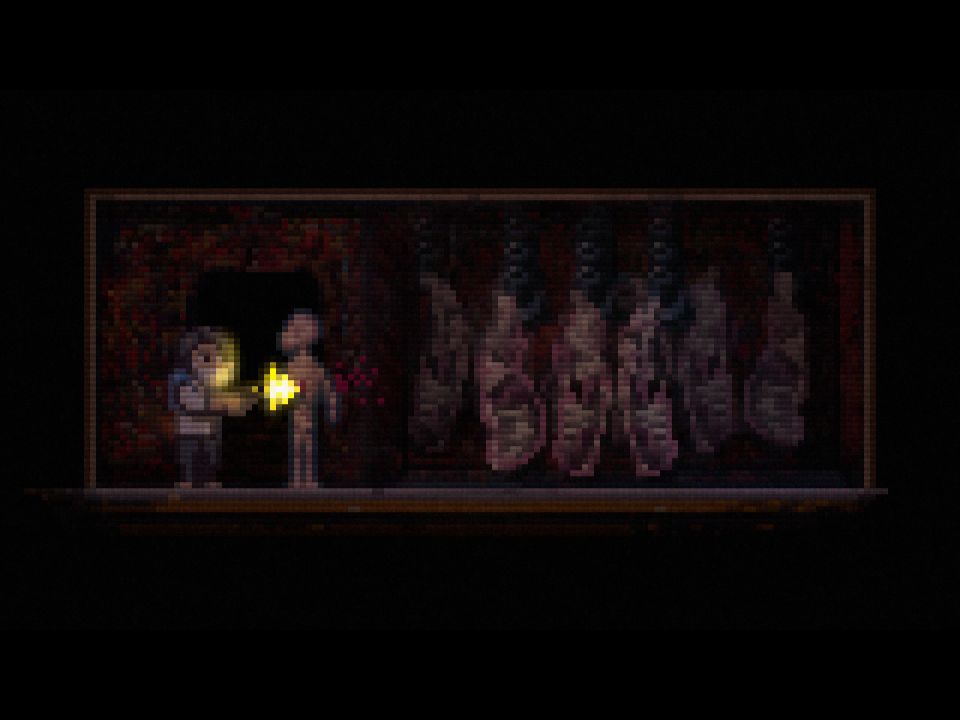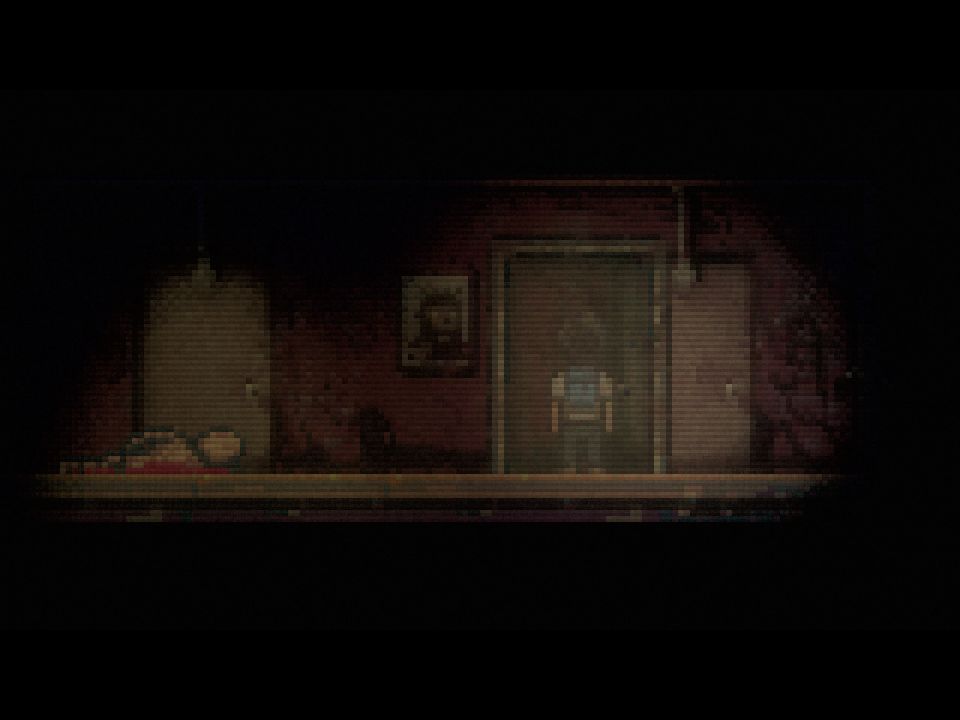Lone Survivor Review
Posted by
with_teeth26
on
While using pixilated 8-bit style visuals to impose a retro vibe on a title is common practice, the use of similar visuals to propagate a fear of the unknown in the modern age of gaming is something we don’t see nearly as often. Lone Survivor boasts highly pixilated visuals not to instill a sense of retro nostalgia, but to make it unclear what exactly you are looking at much of the time. You can’t really see any detail in the monsters, just terrifying outlines accompanied by a static screech that lets your already agitated imagination fill in the blanks. You might encounter what appears to be a person, but due to the indistinct visuals and the mysterious figure’s silence, you might be filled with an uncanny dread that urges you to run and hide. The stellar sound design and soundtrack in combination with these pixilated visuals are what make Lone Survivor so harrowing to play much of the time. These great qualities mean it is a shame that several unnecessary or poorly implemented mechanics get in the way of your immersion.

At the start of the game you are only given a small amount of background information, enough to know that a strange disease has wiped out much of the city you encounter, with the infected turning into shambling mutants who want nothing but to kill anything they encounter. You, the ‘lone survivor,’ start in your apartment building, and from there must scavenge for food, medical supplies, ammo, and information. There is, however, a sense of weirdness about the whole experience, and your few encounters with humans are largely responsible for this weirdness. Early on you walk into a party where a number of people are drinking and seem wholly unconcerned with the horrific events occurring outside their door. When you step outside and come back in a moment later, everyone is dead, but it also appears they have been that way for some time. The game warps your perception of reality, has you second guessing the reliability of what is being shown to you.
The gameplay itself is very simple; you wander around your apartment building looking for food, drinks, ammo etc. Early on you gain possession of a gun, but more often it is best to sneak by the mysterious monsters, or to distract them with rotting meat. If you must use your gun against an infected individual the encounters are great and intense as long as you happen to be facing the monster when you pull out your gun. It seems that if you have your gun drawn you cannot turn around to face a monster on the other side of you, a mechanic that seems wholly bizarre and takes you right out of the experience. Sadly the problems with the game don’t end with this gunplay-glitch. The map you must rely on for navigation is very poorly designed and takes a long time to understand. Nothing kills your immersion like looking at this confusing map then accidentally backtracking for 10 minutes.

The game also requires you to eat, but the frequency with which you must consume food is slightly ridiculous. Every 5-10 minutes your character will stop in his tracks and demand sustenance. There is no meter showing to indicate how hungry you are getting, just your character’s informing you that he needs to be fed. To eat, you must navigate the silly inventory menu to feed your character. The need to eat this often makes this whole mechanic feel contrived, but not as much as your need to return to your apartment to save the game/sleep. You will come across mirrors in the game which you can use to teleport back to your apartment. Here you can sleep, save the game and stock up on meat which you use to distract monsters. Again you will be required to sleep fairly often, and this also feels contrived. The brevity of the game makes your need to return and sleep every 15 minutes feel like a means of padding out the game length. I feel that if the sleep mechanic were replaced with a simple quick-save function, and the frequency of your need to eat was reduced, the experience would be much more immersive and enjoyable.
There is no voice acting in Lone Survivor, rather all of the text is delivered through text based speech-bubbles. This system works well here and is probably a better option than bad voice acting. You find notes scattered about the game that might refer to a location that will then show up on your map as a question mark. You must navigate through the building to get to these places where something usually happens, such as encountering a person. The apartment complex is often very dark, and you must use a flashlight to scan dark areas for supplies. Of course, monsters can see the light, and will come running when you switch it on. This creates a great sense of risk/reward as you decide whether or not it is worth it to quickly turn your light on to see if any food or ammo are hidden in a dark corner.

Sometimes, when a monster sees you, it makes sense to run to the next door and escape. These chases are frantic and intense, and as the monsters roam the halls in unpredictable patterns, you might burst through a door only to find another monster sitting on the other side, initiating another fight-or-flight sequence. These moments, and those when the game’s penchant for weird, uncanny encounters pop up, never allow you to feel safe. The synth-heavy soundtrack is great, and helps propagate an atmosphere of fear and paranoia. These factors are pulled off well enough to make the slight cost of admission seem worthwhile, although some of the more obtrusive mechanics like the need to eat and sleep will frequently pull you out of the experience.

Lone Survivor might not be a lean, mean fear machine like Amnesia: The Dark Descent, but its distinct visuals and great audio give it enough of an uncanny-valley vibe to make it worth checking out. The basic and often awkward gameplay might get in the way of the game’s better aspects, but once you get used to these minor annoyances, you might just end up loving Lone Survivor for its intriguing story and unique atmosphere.
